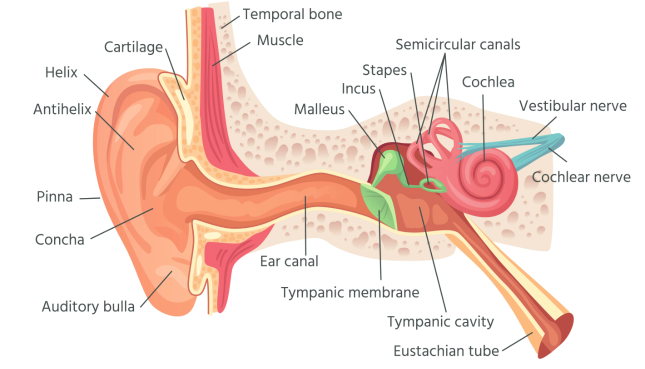There are many different types of hearing aids to help people with mild, moderate or severe hearing loss. Hearing aids can be classified by the way they fit in your ear and the technology used to amplify sound.
The type of hearing aid that is best for you will depend on several factors including your lifestyle, budget, and how much hearing loss you have. Your audiologist can help determine which style is right for you.
If you have been considering whether to get a hearing aid, but are afraid that it will look funny or won’t help, read on for more information. You may find it reassuring to know about the many options available and what features you should be looking for when buying one. Plus, there are tips on how to adjust once you start wearing one.


With advances in digital technology, different types of hearing aids have been created to amplify sound so well. Some types of hearing aids are nearly indistinguishable from natural hearing. There are types of hearing aids that do not rely on power cords or plugs.
Sensitive hearing aid parts are the engine that powers your ears. Digital types of hearing aids use advanced technology, like a camera lens to magnify sounds and keep them in focus. They also make hearing just as natural as it would be without hearing loss – by amplifying sound frequencies separately. Powered with batteries, these devices will last up to four days before needing a charge.
To amplify sound, small microphones collect sounds from the environment. A computer chip with an amplifier converts the incoming sound into digital code that is adjusted based on your hearing loss, listening needs and the level of the sounds around you. The amplified signals are then converted back into sound waves and delivered to your ears through speakers sometimes called receivers.
With so many different types of hearing aids to choose from, it’s hard to know which one is best for you. Prices range anywhere from $200 to a thousand dollars. The size of the aid also depends on how severe your hearing loss is. You may need a larger device if your hearing loss does not have too much variation in volume or pitch.
Hearing aids come in two basic styles;- behind-the ear (BTE) or custom molded devices that fit inside the top part of your ear canal called an in-the-ear (ITE). BTEs are more commonly prescribed because they are easier to find and less expensive than ITEs and offer better sound quality. ITE devices are growing more popular as their price has dropped significantly over the last few years but do require a professional molding process by an audiologist who specializes in this type of work.
The following are the most common hearing aid styles, beginning with the smallest and least noticeable in the ear. Hearing aid designers keep making smaller aids to meet the demand for a hearing aid that is not very noticeable. But these smaller models may not have enough power to give you an improved hearing experience.
A completely in the canal (CIC) or mini CIC hearing aid is an excellent option for adults with mild to moderate hearing loss who are looking for a discreet solution.
A CIC fitting involves molding technology and careful precision — but don`t worry – it is very safe and minimal discomfort will occur.
A completely-in-the-canal hearing aid is the smallest and least visible type of hearing aid. It’s less likely to pick up wind noise, uses very small batteries which have shorter life and can be difficult to handle, doesn’t include extra features such as volume control or a directional microphone, and is susceptible to earwax clogging the speaker.

Now you can hear most without looking like you’re trying. That’s because In The Canal hearing aid is custom molded to fit a person’s ear and often protrudes very slightly from the opening of the canal for discreet and comfortable wear. They are typically less expensive than other styles, which makes them an attractive option for someone who wants accurate sound clarity, but at a lower cost. An ITC hearing aid works well for people with more moderate hearing loss—often those coping with age-related or noise-induced loss—who do not need maximum volume amplification yet still want to enjoy better hearing.
The benefits of this type of hearing aid are as follows:
Lightweight.
Makes you less aware that you’re even wearing them.
Discreet in-the-ear, low profile design gives a natural look and feel while reducing visibility to others and making everyday activities like bathing or sleeping easy
There are two styles of ITE hearing aids that can be made specifically for you. The Half Shell style which is custom fit to only the lower portion of your ear and a Full Shell that fills most or all of the bowl-shaped area in your outer ear. Whether it’s just mild or severe, these types will benefit you and help with different levels so make sure to find the type best suited for you. If you are in Rochester, NY, our team at Ontario Hearing Center can help you find the best suited type of hearing aid for you.
ITE types of hearing aids have directional microphones which can offer more comfort depending on where exactly in the room noise is coming from . This means more clarity and better hearing.
This type of hearing aid is not visible outside the ear. These are larger and often heavier than their behind-the-ear counterparts; the battery life can last up to 3x as long. (This means that a wearer spends less time charging their device.) This type of hearing aid is sensitive to earwax plugging up the speaker, and wind noise might need some sound dampening technology.


Hearing aids are getting smaller and more advanced, allowing them to fit directly behind the ear. Behind-the-ear hearing aids (BTEs) come in many shapes and sizes so that people can find one that appeals to their sense of style. Technology is paving the way for those who suffer from hearing loss to once again fully enjoy conversations, concerts or whatever sounds captivates their attention.
Comfortable to wear, large – behind-the-ear hearing aids are powerful. They have directional microphones that pick up the sounds you want to hear and let less background noise in
An open earpiece design gets rid of the often clunky feeling many people associate with hearing aids
A receiver-in-canal (RIC) or receiver-in-the ear (RITE) style might be practical if you don’t want to wear something bulky behind your ear. With these styles of hearing aids, the speaker can sit in your canal(s), making it seem like sound and come directly into them without obstruction from the side of the head.
Though most modern hearing aids use the in-the-ear type of receiver, there are still some environments where a receiver-in-canal aid can be more effective. The canal portion prevents other noises from interfering with your ability to hear properly and is less visible than a behind-the-ear model, making it an ideal choice for people who need help hearing but do not want to sacrifice style or safety by wearing an earphone on a prominent location on their head.


An open-fit behind-the-ear hearing aid is designed to fit right around your ear and have a thin tubing that goes down inside the ear canal. It’s an excellent choice for people who prefer hearing aids with a low profile, primarily because it allows you to hear sounds at lower frequencies naturally. Open-fit products are also a great option for those who experience discomfort when using in-the-canal or receiver-in-[email protected] types of hearing aids, as it keeps the ears very light and open.
An open-fit hearing aid is a type of hearing device where the dome sits outside your ear canal instead of behind it. This style is often visible and also makes you hear better in some situations or when wearing certain types of clothing. It has, however, more disadvantages including that it may be more difficult to insert into the ear due to the non custom shape. The receptiveness differs from person to person depending on sensitivity levels — for example, this may work well for someone with milder sensitivity levels but not so good for someone with severe ones.
Invisible-in-canal (IIC) hearing aids are the smallest custom hearing aids that are available. This kind of hearing aid is designed and sculpted to fit entirely inside your ear canal. This makes them almost invisible to those around you.
Invisible Hearing Aids are a new technology that can help someone who has mild or moderate hearing loss to hear and communicate better in their day-to-day lives. Although there isn’t any one size fits all solution for invisible hearing aids because the shape of your ear canal will vary from person to person.

Your success with hearing aids can be helped by wearing them regularly and taking good care of them. In addition, an audiologist can tell you about new hearing aids that become available and help you make changes to meet your needs. The goal is that, in time, you find a hearing aid that’s comfortable for you and enhances your ability to hear and communicate.
Choosing among the types of hearing aids in the market can be really overwhelming. We at Ontario Hearing Center want to make the process easier for you. Let our certified audiologists assess your hearing needs so we can get started with your hearing health journey.
Contact us today to schedule an appointment!